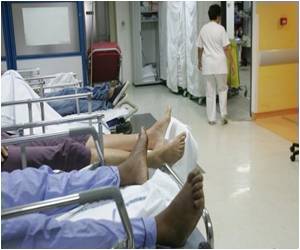Showing that greater attention and financial investment may be needed in places where the disease has not reached epidemic levels, the HIV/AIDS epidemic is changing in unexpected ways in countries around the world.

HIV/AIDS is the leading cause of disease burden in 21 countries concentrated in four regions: Eastern and Southern Africa, Central Africa, the Caribbean, and Southeast Asia. In another seven countries, it's the second leading cause of disease burden. Despite widespread declines in HIV/AIDS mortality, between 2006 and 2010 HIV/AIDS deaths increased in 98 countries.
In 2005, 68.7% of global HIV/AIDS burden was in countries where HIV/AIDS is the leading or second leading cause of the burden of disease. In 2010, 59.4% of the burden was in countries where HIV/AIDS ranked first or second, meaning countries where the disease ranked lower represented a larger share of the burden.
In 2010, for example, 20% of health loss due to HIV/AID was in countries where HIV/AIDS was not in the top 10 causes of disease burden compared to only 15.5% in 2005.
The findings were published August 21st in the study "The Burden of HIV: Insights from the GBD 2010" in the peer-reviewed journal AIDS.
IHME researchers also underscore the achievements that have been made against HIV—in terms of raising public awareness and increasing access to antiretroviral treatment—as well as the unrelenting challenges that AIDS poses to health around the world.
Advertisement
The epidemic has peaked at different times in different countries, showing different rates of progress. In Botswana deaths are down 74%; in Mexico deaths are down 69.2%; and in Kazakhstan deaths are down 66.6%.
Advertisement
"We cannot afford to become complacent when HIV/AIDS remains a tremendous threat," said researcher and lead study author Katrina F. Ortblad of IHME. "Countries that bear significant burden must scale up effective interventions and treatments. In countries where the impact of HIV/AIDS is relatively small but burden is increasing, prevention can help change the course of future epidemics."
IHME's study examines health loss from HIV/AIDS as measured in DALYs, or disability-adjusted life years. DALYs combine years of life lost to premature death with years lived with disability and allow comparisons among different populations and health conditions.
While the global health landscape is increasingly dominated by the rise of non-communicable diseases, injuries, and disabling conditions, HIV takes a particular toll on young people around the world. It is the number one cause of disease burden for men aged 30 to 44 and women aged 25 to 44.
Globally, there are 78 countries where HIV/AIDS accounts for more than 10% of deaths in people aged 30 to 34.
In South Africa, for example, the picture is even more striking. In 2010, HIV/AIDS caused 75% of deaths among people aged 30 to 34; the figure rose to 84% for women in that age group.
Even in wealthier countries, challenges in addressing HIV/AIDS remain. In the United States, where deaths due to the disease are down 75.6% since its peak, HIV/AIDS still contributes to 0.7% of American health loss, far more than in other high-income countries like the United Kingdom, Canada, and France, and even more than in many developing countries such as Congo, Mongolia and Sri Lanka.
Success in these countries and many others has been largely due to substantial global action, policy changes and funding. Between 2002 and 2010, development assistance for health targeting HIV/AIDS increased from US$1.4 billion to US$6.8 billion – an increase of 385.7% that does not include funds spent by low- and middle-income countries themselves.
Increased access to antiretrovirals has accompanied declines in incidence, and more interventions to prevent mother-to-child transmission.
"The success we have made in combatting HIV/AIDS illustrates what can happen when funders, advocates, governments and health experts commit to a common goal, and dedicate resources to back up the commitment," said Dr. Christopher Murray, IHME director and one of the study's authors. "By gathering the best evidence on the spread of HIV/AIDS we can ensure continued progress."
The study also notes the challenges in collecting country-level estimates from different sources and calls for improvements in vital registration data that records a population's births and deaths.
In sub-Saharan Africa, which accounts for 70.9% of the global health loss attributable to HIV/AIDS, progress against the disease is mixed. In Rwanda, Botswana and Zimbabwe, for example, mortality due to HIV/AIDS decreased dramatically from epidemic peak to 2010; 83.1%, 74% and 47.5% respectively. In other sub-Saharan African countries like Democratic Republic of the Congo, Angola and the Central African Republic, progress has been nearly nonexistent.
"AIDS is not just a problem in Africa," explained Dr. Rafael Lozano, IHME's Director of Latin American and Caribbean Initiatives and one of the paper's authors. "We see significant mortality numbers from AIDS in countries as varied as Venezuela, Thailand and Jamaica."
Source-Eurekalert








